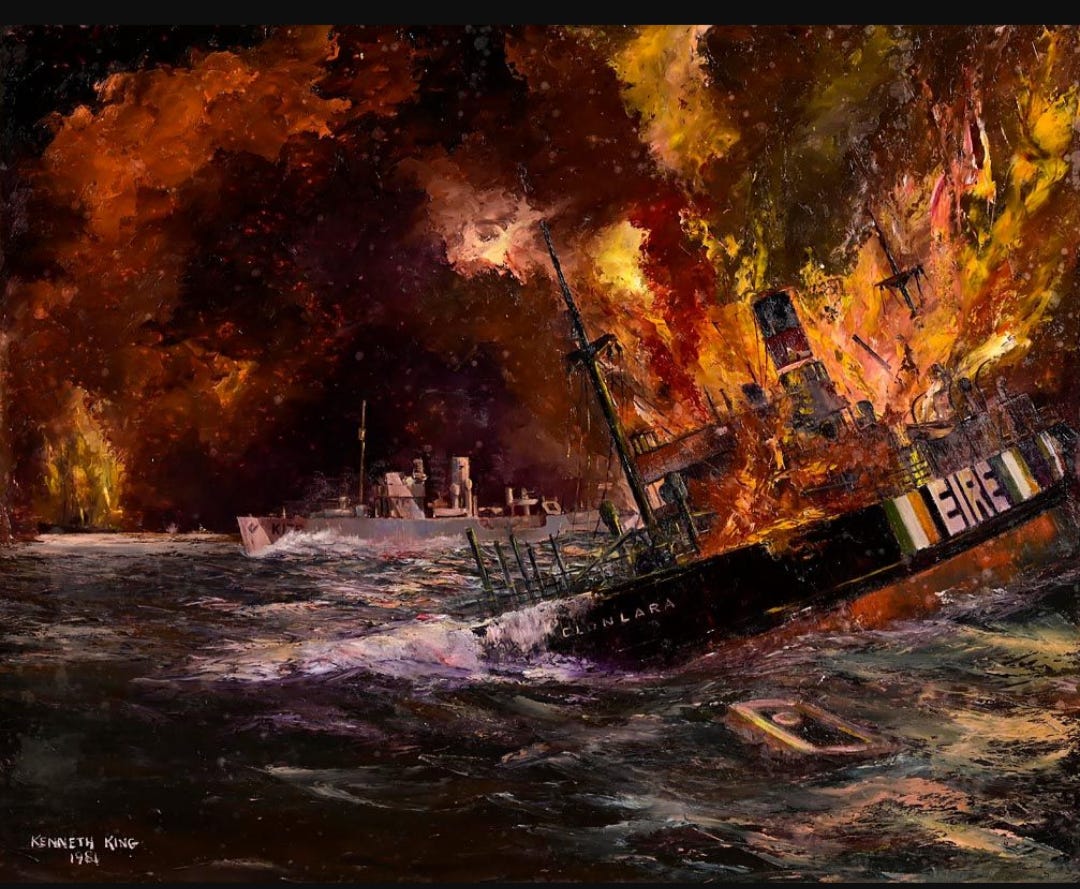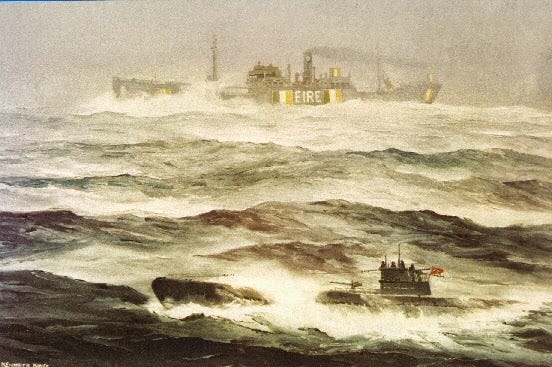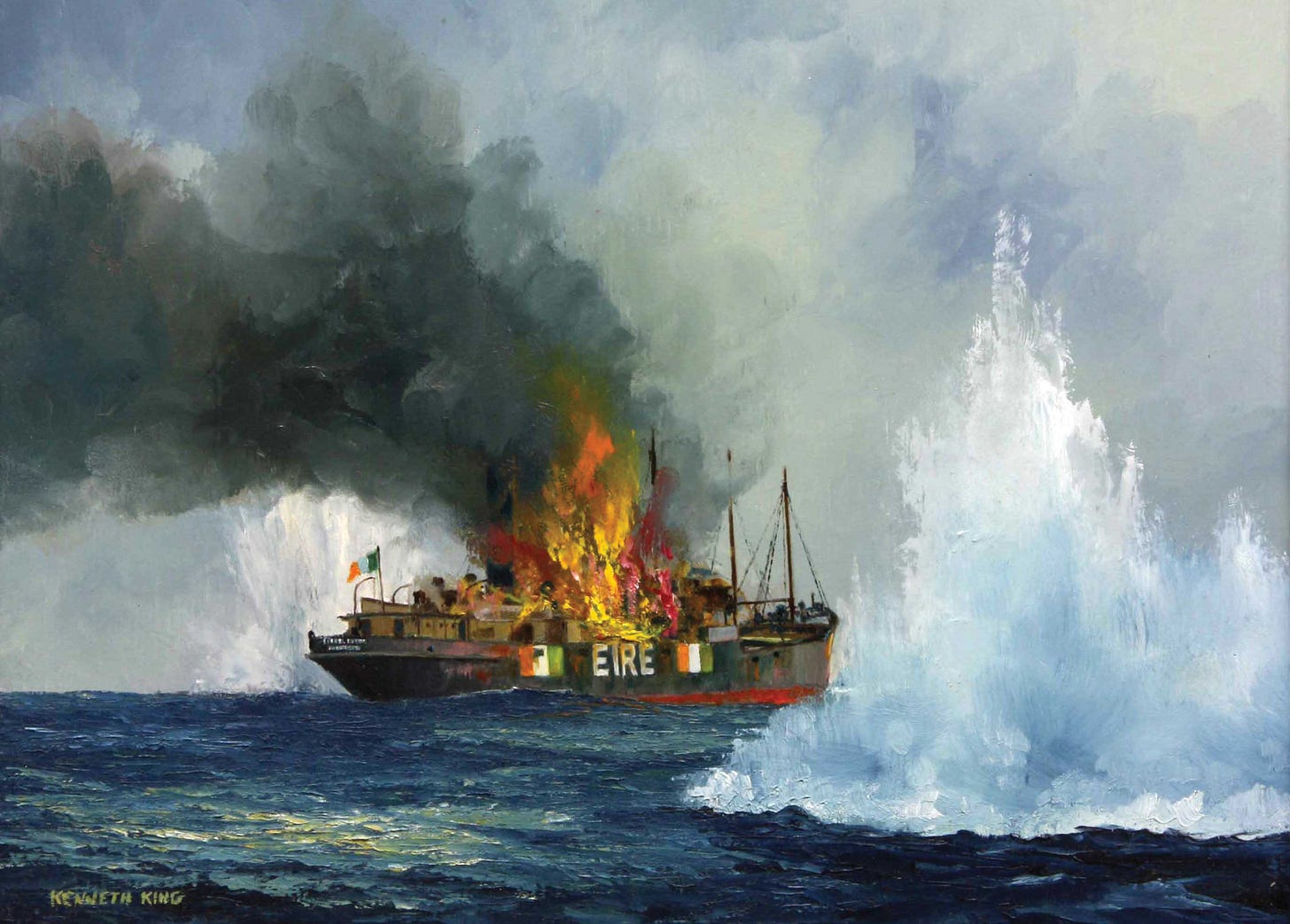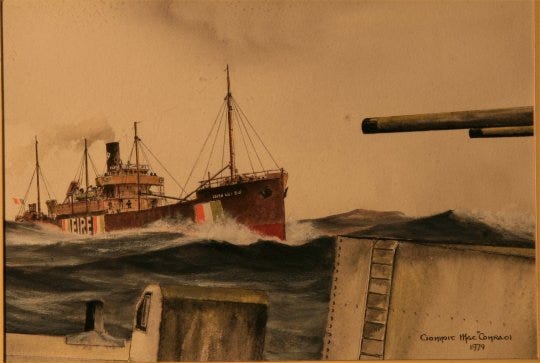In an example of the famed Irish propensity for understatement, WWII was known officially as ‘The Emergency’.
While Ireland held neutrality in the conflict, it was far from untouched by it.
Image: The Sinking of the Clonlara in Convoy World War II (1981), Kenneth King (oil on canvas, from a private collection).
Britain cut off cross-channel trade with Ireland due to the threat posed by German U-boats patrolling the Irish Sea, forcing the Irish government to augment its merchant navy to keep the country from falling into economic collapse.
Charged with embarking on perilous voyages across the Atlantic and the Mediterranean Sea, these vessels were unarmed, barely seaworthy and not designed for trans-oceanic crossing.
‘The Long Watch’ was the name given by Irish seafarers who crewed these ships to this period.
Image: The Irish Pine, Kenneth King.
The Irish tricolour and the word ‘EIRE’ were painted port and starboard on each ship to signify their neutrality.
This didn’t entirely prevent their attacks by torpedo, such was the fate that befell the SS Irish Pine and SS Irish Oak.
Image: The Loss of Irish Pine, Kenneth King (oil on canvas, National Maritime Museum of Ireland).
Over 20% of sailors serving were killed in either Axis or Allied attacks. Even so, Irish ships responded to SOS signals from both sides as a point of honour, and as many as 534 people were saved from drowning due to Irish efforts.
Their bravery, I think, is worth commemorating.
Image: From the deck of U-boat U-753, signalling to Irish Willow “send master and ships papers”, Kenneth King, National Maritime Museum of Ireland.
Daniel Wade's Letters from Wade’s Inferno is a reader-supported publication. To receive new posts and support my work, consider becoming a free or paid subscriber.








